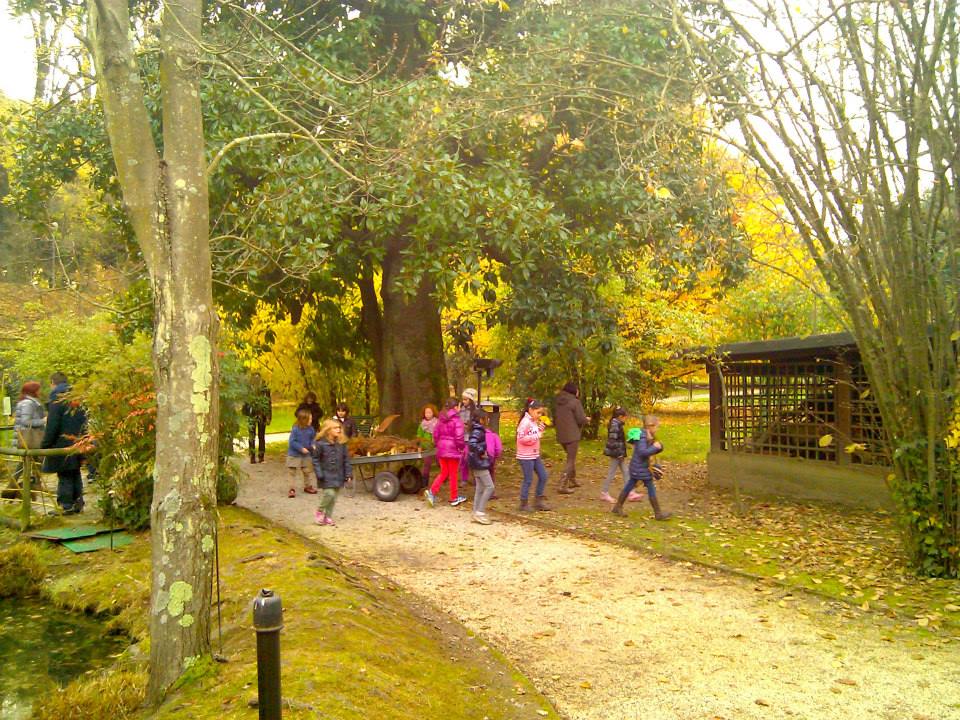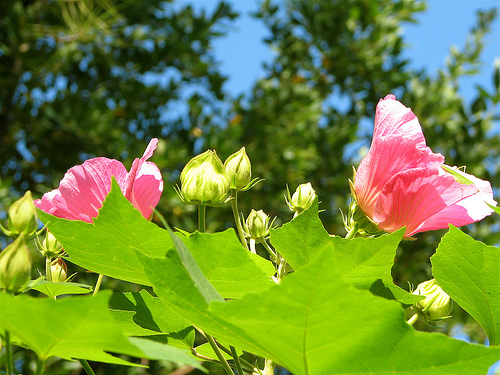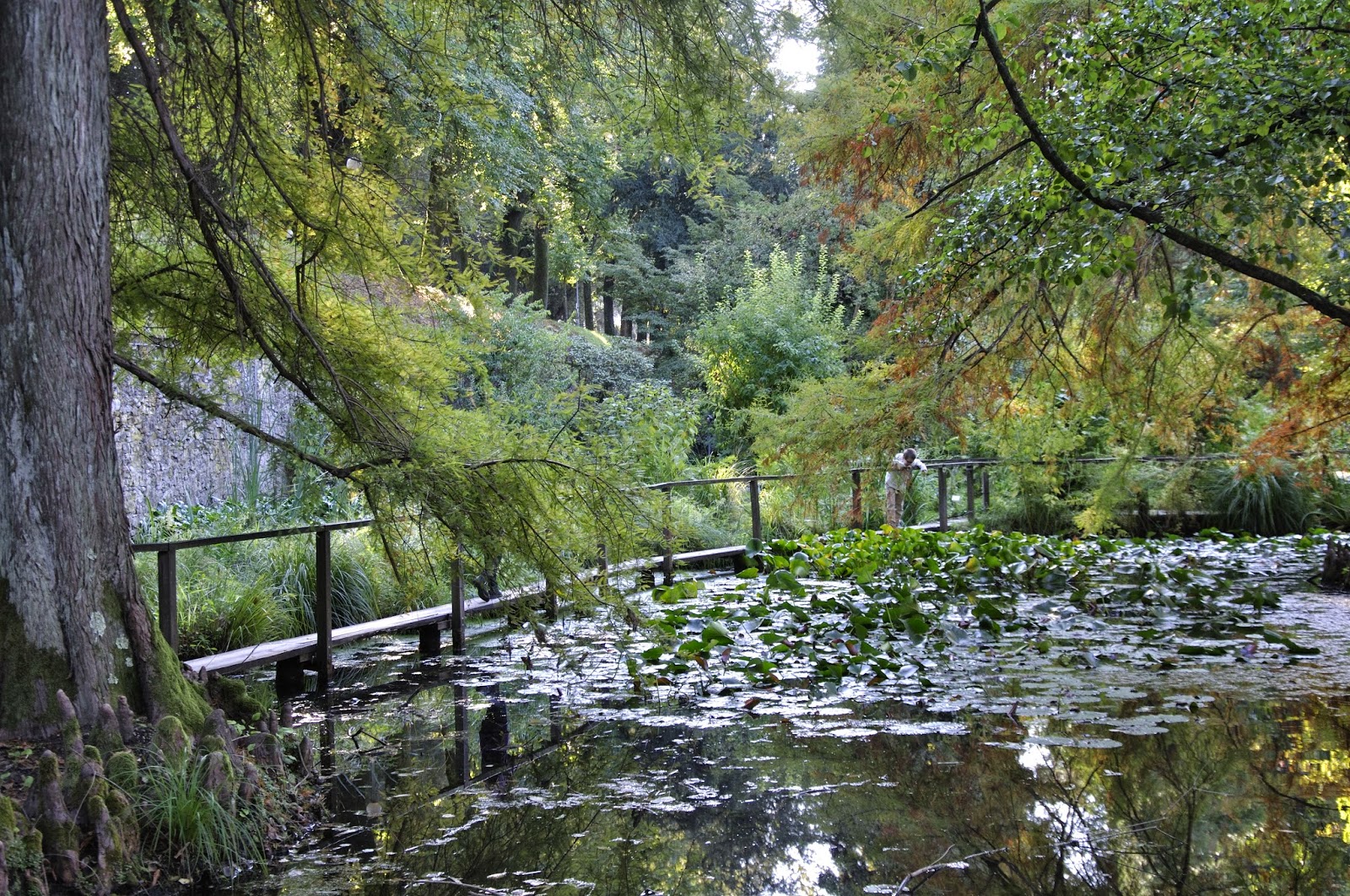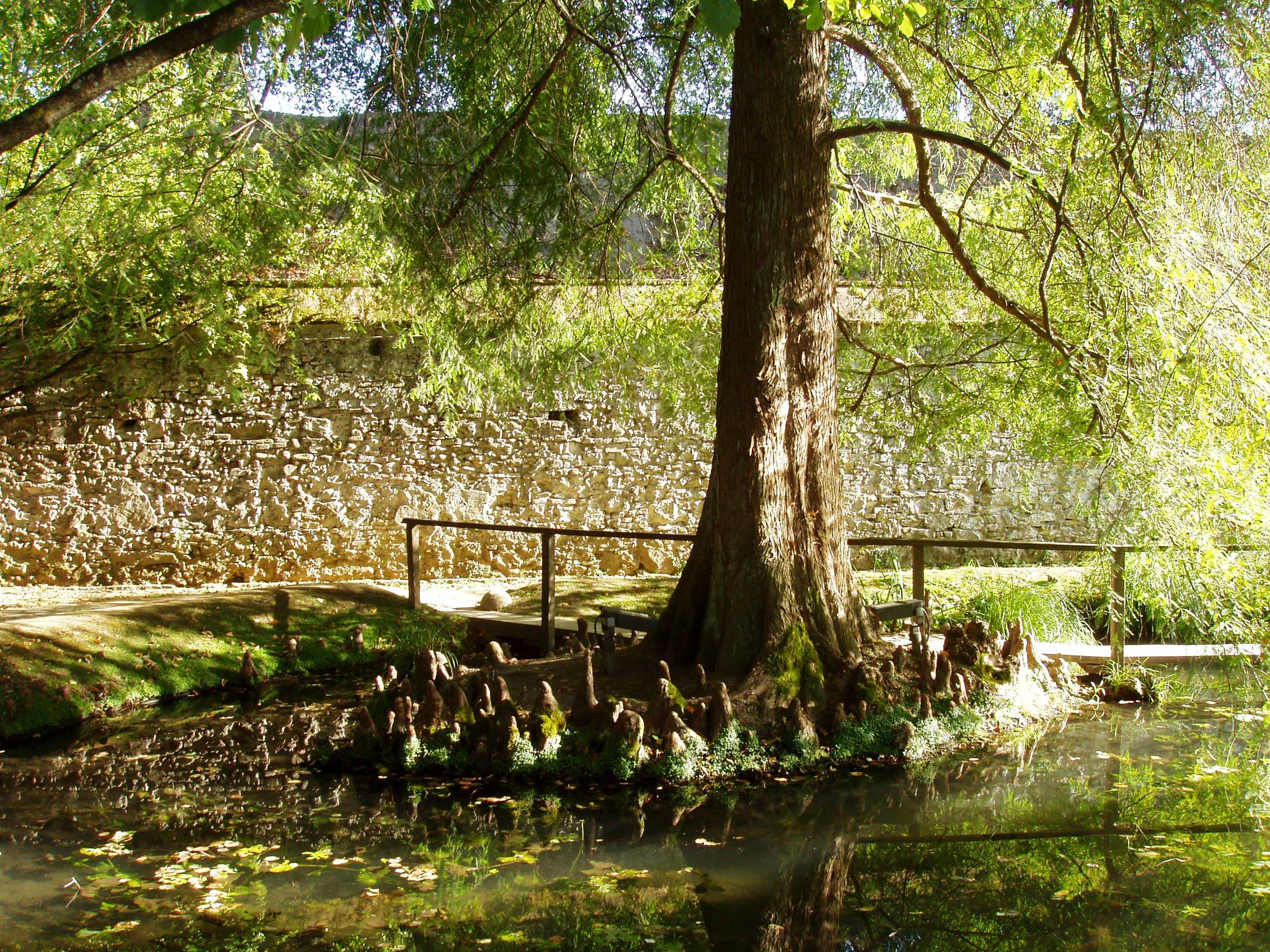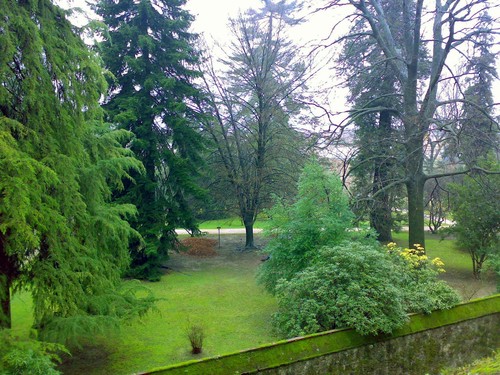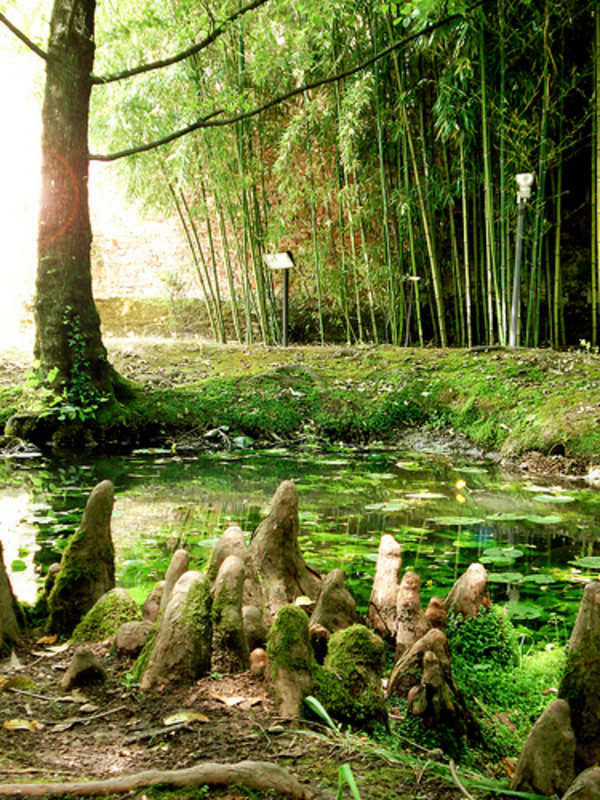
Lucca Botanical Garden
This post is also available in:
 Italiano (Italian)
Italiano (Italian)
The Municipal Botanical Garden of Lucca is a scientific institution founded in 1820 by Maria Luisa di Borbone and located in the historic centre of town. The garden, which covers about 5 acres, is divided into two large sectors: on one side there are the arboretum, the mound and the pond, on the other, there are the botanical school and the greenhouses.
The arboretum, once designed according to the geometric pattern of the parterre, is home to most of the trees and shrubs, mostly exotic. Some woody species were introduced in the first half of the XIX century, such as the cedar of Lebanon (Cedrus libani), the magnolia (Magnolia grandiflora), the fragrant olive tree (Osmanthus fragrans), and the sequoia (Sequoia sempervirens); others were added after 1850, as the maidenhair tree (Ginkgo biloba), the banana shrub (Michelia figo), Balearic boxwood (Buxus balearica), Lawson cypresses (Chamaecyparis lawsoniana), and false camphor trees (Cinnamomum glanduliferum).
The arboretum also hosts monumental trees, such as the black pine (Pinus nigra), with a circumference of 8.6 ft and a height of 98 ft, and the cedar of Lebanon, a true symbol of the Garden with its 19.6-ft circumference and 72-ft high, planted by Paolo Volpi in 1822.
Inside the garden, there is a collection of about 500 officinal species from different continents. This Hortus sanitatis was created in 1982 preserving the ancient traditions of the Institute when it used to be attended mainly by students of medicine and pharmacy.
Among the various species, visitors can find oregano (Origanum vulgare), grear mullein (Verbascum thapsus), Indian tobacco (Lobelia inflata), American ginseng (Panax quinquefolium), sesame (Sesamum indicum), Indian snakeroot (Rauwolfia serpentina), gum benjamin tree (Styrax benzoin), castor bean (Ricinus communis), hispid strophanthus (Strophantus hispidus), quassia (Quassia amara), Alexandria senna (Cassia acutifolia), and boldo (Peumus boldus).
The montagnola is a small artificial hill where the Mediterranean xerophilous species and those typical of the Apuan Alps and the Lucchese Apennines are currently cultivated – they include the narrow-leaved mock privet (Phillyrea angustifolia, Phillyrea latifolia), mastic trees (Pistacia lentiscus), pistachio (Pistacia vera), butcher’s broom (Ruscus aculeatus), strawberry trees (Arbutus unedo), carobs (Ceratonia siliqua), and a specimen of boxwood (Buxus sempervirens) 19.6-ft high and with a circumference of 2.95 ft.
The hygrophilous plants that live in permanently humid environments are cultivated around the Orto lake. Among these species, there are the white water-lily (Nymphaea alba), the yellow water-lily (Nuphar lutea), the royal fern (Osmunda regalis), the narrow leaf cattail (Typha angustifolia), the European aspen (Populus tremula), and the black alder (Alnus glutinosa) covered by silk vine (Periploca graeca) climbs. On one side of the lake a spagneta has been created – an area featuring moss called “sphagnums” (Sphagnum), where also some glacial relics frow abundant.
In the greenhouses, in addition to the succulent collection, there are several plants suitable for very dry environments, with a warm climate during the day and cold nights, as well as species from the rainforests and tropical areas (they are mostly potted).
The flower beds, on the other hand, house 200 species of rhododendrons and camellias, the latter imported in the XVIII century, and then spread thanks to the favourable climatic conditions.
The Garden also includes a collection of indigenous plants of Lucca such as flatweed (Hypochaeris radicata), smooth hawksbeard (Crepis capillaris), “wild radicchio” (Hyoseris radiata), bladder campion (Silene vulgaris), watercress (Nasturtium officinale), and common hop (Humulus lupulus).
This post is also available in:
 Italiano (Italian)
Italiano (Italian)
Contatti
Lucca(LU)
0583 583086
operamura@comune.lucca.it
http://www.ortobotanicodilucca.it
Altre info
Normale 3,00 euro (persone da 14 a 65 anni); ridotto 2,00 euro (ragazzi da 6 a 14 anni, anziani oltre i 65 anni, gruppi organizzati con Guida o singoli accompagnati da Guida Turistica); gratuito (bambini sotto i 6 anni, disabili con accompagnatore, Studenti per motivi studio)
Tutto l'anno
Diversi in base al periodo dell'anno (vedi note)
